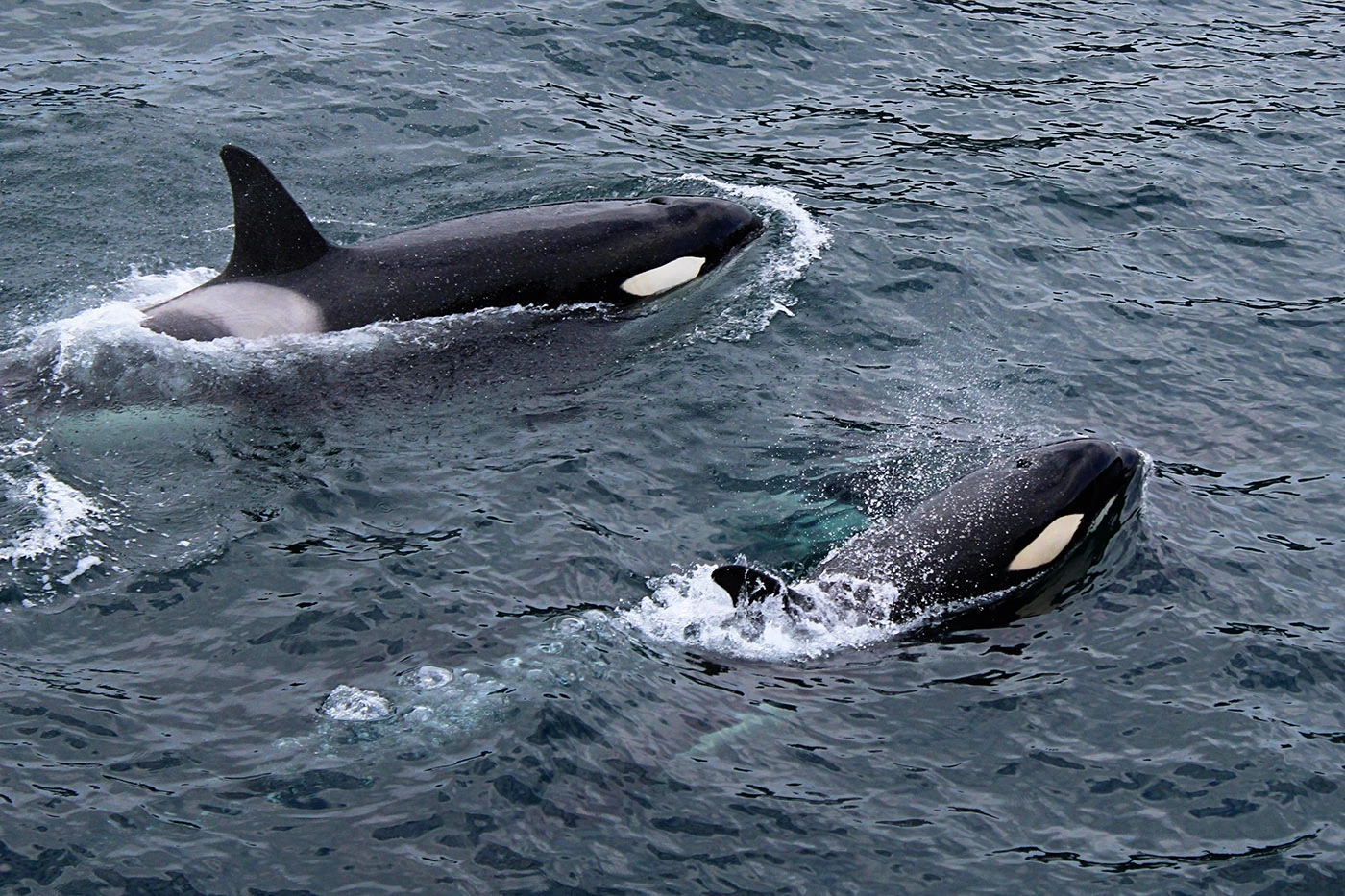Killer whales are known as apex predators in the regions they inhabit in each of the Earth's oceans, typically preying on fish, turtles, marine mammals like seals, and even moose. Now, researchers have found compelling evidence to confirm that a specific pod in the Gulf of California has developed an astonishing new skill: hunting enormous whale sharks.
That's literally big news: whale sharks are the largest sharks and the largest fish on the planet, reaching up to 60 ft (18 m) in length. Marine biologists have observed four separate incidents over the last six years in which clever orcas have devised a way to take these massive fish down, earning themselves a nutritious meal in the process. Killer whales themselves can grow to be up to 26 ft long (8 m) and weigh in excess of 6 tons.
Whale sharks are filter feeders, which means they have large mouths with which to eat plankton and small fish. They generally move slowly, and can live to be as much as 130 years old. When they're young, they seasonally aggregate at coastal sites like those in the southern Gulf of California to feed in large numbers. That's also when they're smaller, and as the researchers discovered in Mexico, more vulnerable to predatory killer whales.

Analyzing photos and footage in which they recognized specific orcas by their dorsal fins and scars, the team discovered that three of the four attacks featured a large male orca called Moctezuma. In all four attacks, the killer whales teamed up to hunt whale sharks in a calculated manner.

"When hunting, all pod members work together, hitting the whale shark to turn it upside down," explained marine biologist Erick Higuera Rivas. "In that position the sharks enter a state of tonic immobility and can no longer move voluntarily or escape by going deeper. By keeping it under control, the orcas then have greater ease and speed in approaching the pelvic area of the shark and are able to extract organs of nutritional importance for them.”
That's an awful way to go. Killer whales have been spotted attacking whale sharks elsewhere, but it appears that this pod in particular has figured out a particularly effective way of hunting these massive fish. By attacking them from below, the orcas avoid the whale sharks' tough dorsal skin that has denticles embedded on the outside, with thick connective tissue beneath it. Plus, they get quicker access to the aorta by taking a big bite out of the whale shark's underside.

“It is very impressive how orcas work together strategically and intelligently to access only a very specific area of the prey,” concluded Higuera Rivas. "It highlights what great predators they are." Indeed, recent findings have shown them to be masters of the seas: in 2022, we heard about the first known incident of orcas killing a blue whale. Earlier this year, we reported a killer whale attacking a great white shark solo, which was previously unheard of.

These four encounters may also point to the impact of climate change on the habits of marine life. It's possible that shifts in water temperature, prey availability, and ocean currents are influencing whale shark movements and aggregation patterns – bringing them in close proximity with killer whales more frequently. Similarly, changes in the abundance and distribution of killer whales' preferred prey, such as marine mammals or other fish species, may be the reason why they're looking at whale sharks as a food source in that region.
Source: Frontiers in Marine Science






